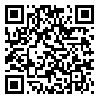BibTeX | RIS | EndNote | Medlars | ProCite | Reference Manager | RefWorks
Send citation to:
URL: http://mjiri.iums.ac.ir/article-1-2590-en.html

 , Hamidreza Tabatabaee
, Hamidreza Tabatabaee 
 , Parvin Afsar Kazerooni
, Parvin Afsar Kazerooni 
 , Sajad Vahedi
, Sajad Vahedi 
 , Meysam Enaami
, Meysam Enaami 
 , Abedin Teimourizad
, Abedin Teimourizad 

Background: Acquired immune deficiency syndrome (AIDS) was firstly reported from California and soon became a pandemic in the world.This disease poses seriousthreats to humans’ health.In this study, we intended to examine the characteristicsof HIV-positive patients whoreferred to the Behavioral Diseases Consultation Center (BDCC) in Shiraz, Iran.
Methods : This was a cross-sectional descriptive study.HIV-positive patients,referring toBDCC of Shiraz University of Medical Scienceswere the populationunder thestudy. The data, collected through a checklist,wereencodedand enteredintothe SPSS 19. Then descriptive statistics such as mean, median,standard deviation and range were used to describe the variables. Also, the relationships between the variables were testedusing X2 test.
Results : The mean and median age of the HIV-positive patientswere 39 + 8.7 and 38years, respectively.Nearly327 (65.4%) of the studied population were maleand 173 (34.6%) were female. With respect to marital status,225 (45%)participantswere married, 133 (27%) were single,91 (18.2%) were divorced and 49 (9.8%) werewidowed. Also,265(53%) of the participantswere infected throughinjection drug use, 198 (39.6%) through sexual route,7 (1.4%) through blood and blood products, 6 (1.2%) throughtattoos and 21 (4.2%) by other routes.Most of the participantshad a HIV-positive history in theirfamily, and 145 (29%) mentionedthat their wiveswere HIV-positive.Moreover, 320 (62.7%) of the participantshad a positive history of drug use, 176 (35.2%) did not have a history of drug abuse, and the status of 10 (2%)participantswas not recognized.
Conclusion : Although the results of this study highlighted that injection addiction remains the major transmission route inIran, the role of sexual transmission should be acknowledged in the future.
| Rights and permissions | |
 |
This work is licensed under a Creative Commons Attribution-NonCommercial 4.0 International License. |



